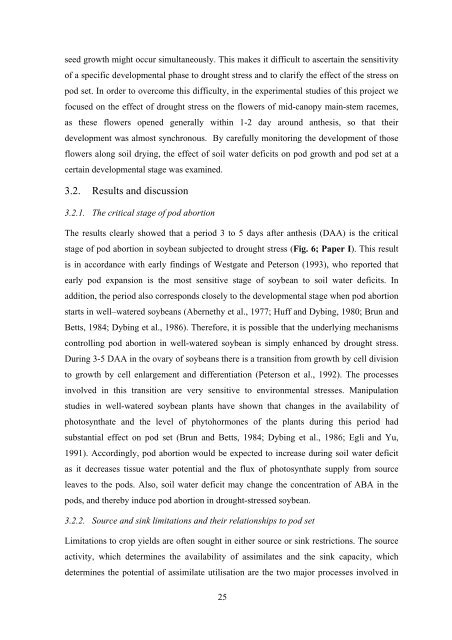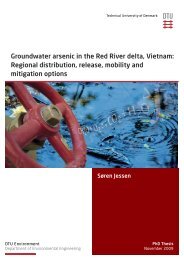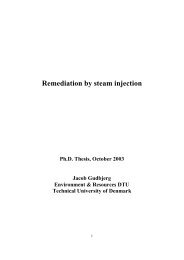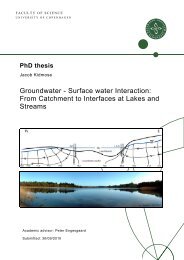Download PhD Thesis - Fiva
Download PhD Thesis - Fiva
Download PhD Thesis - Fiva
You also want an ePaper? Increase the reach of your titles
YUMPU automatically turns print PDFs into web optimized ePapers that Google loves.
seed growth might occur simultaneously. This makes it difficult to ascertain the sensitivity<br />
of a specific developmental phase to drought stress and to clarify the effect of the stress on<br />
pod set. In order to overcome this difficulty, in the experimental studies of this project we<br />
focused on the effect of drought stress on the flowers of mid-canopy main-stem racemes,<br />
as these flowers opened generally within 1-2 day around anthesis, so that their<br />
development was almost synchronous. By carefully monitoring the development of those<br />
flowers along soil drying, the effect of soil water deficits on pod growth and pod set at a<br />
certain developmental stage was examined.<br />
3.2. Results and discussion<br />
3.2.1. The critical stage of pod abortion<br />
The results clearly showed that a period 3 to 5 days after anthesis (DAA) is the critical<br />
stage of pod abortion in soybean subjected to drought stress (Fig. 6; Paper I). This result<br />
is in accordance with early findings of Westgate and Peterson (1993), who reported that<br />
early pod expansion is the most sensitive stage of soybean to soil water deficits. In<br />
addition, the period also corresponds closely to the developmental stage when pod abortion<br />
starts in well–watered soybeans (Abernethy et al., 1977; Huff and Dybing, 1980; Brun and<br />
Betts, 1984; Dybing et al., 1986). Therefore, it is possible that the underlying mechanisms<br />
controlling pod abortion in well-watered soybean is simply enhanced by drought stress.<br />
During 3-5 DAA in the ovary of soybeans there is a transition from growth by cell division<br />
to growth by cell enlargement and differentiation (Peterson et al., 1992). The processes<br />
involved in this transition are very sensitive to environmental stresses. Manipulation<br />
studies in well-watered soybean plants have shown that changes in the availability of<br />
photosynthate and the level of phytohormones of the plants during this period had<br />
substantial effect on pod set (Brun and Betts, 1984; Dybing et al., 1986; Egli and Yu,<br />
1991). Accordingly, pod abortion would be expected to increase during soil water deficit<br />
as it decreases tissue water potential and the flux of photosynthate supply from source<br />
leaves to the pods. Also, soil water deficit may change the concentration of ABA in the<br />
pods, and thereby induce pod abortion in drought-stressed soybean.<br />
3.2.2. Source and sink limitations and their relationships to pod set<br />
Limitations to crop yields are often sought in either source or sink restrictions. The source<br />
activity, which determines the availability of assimilates and the sink capacity, which<br />
determines the potential of assimilate utilisation are the two major processes involved in<br />
25





